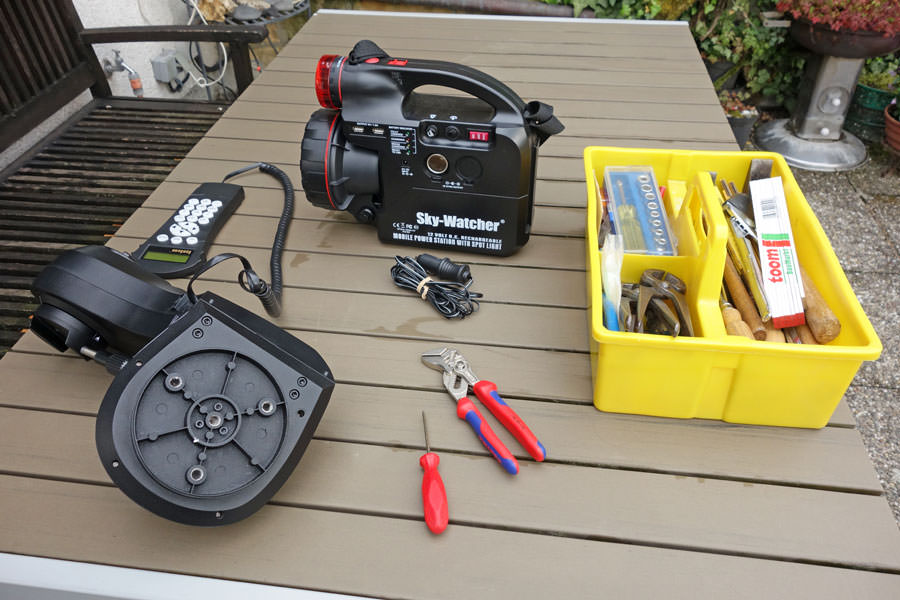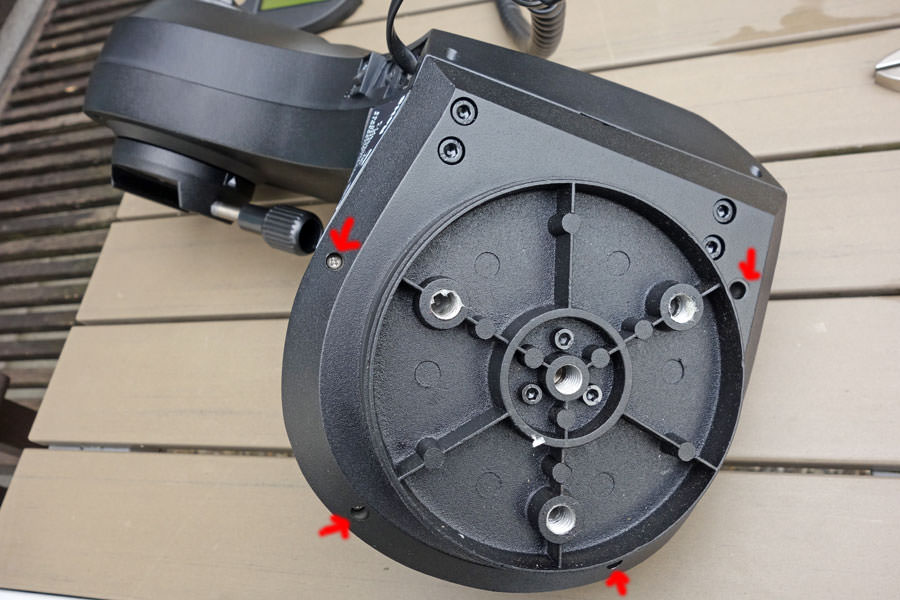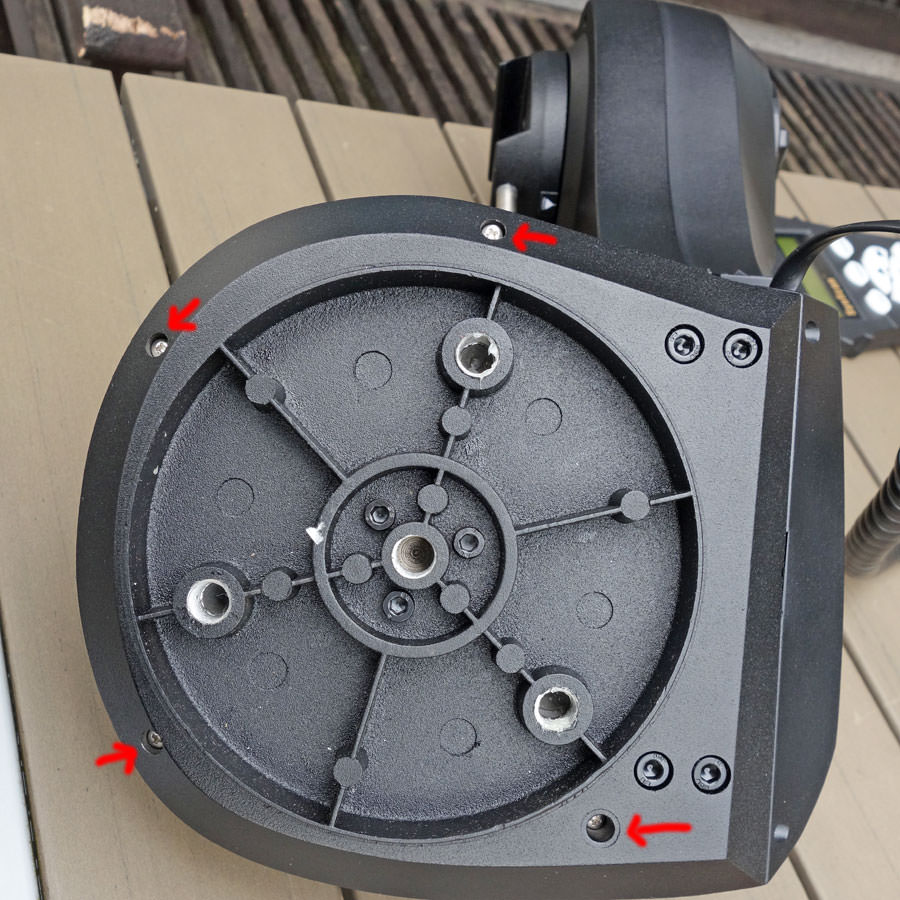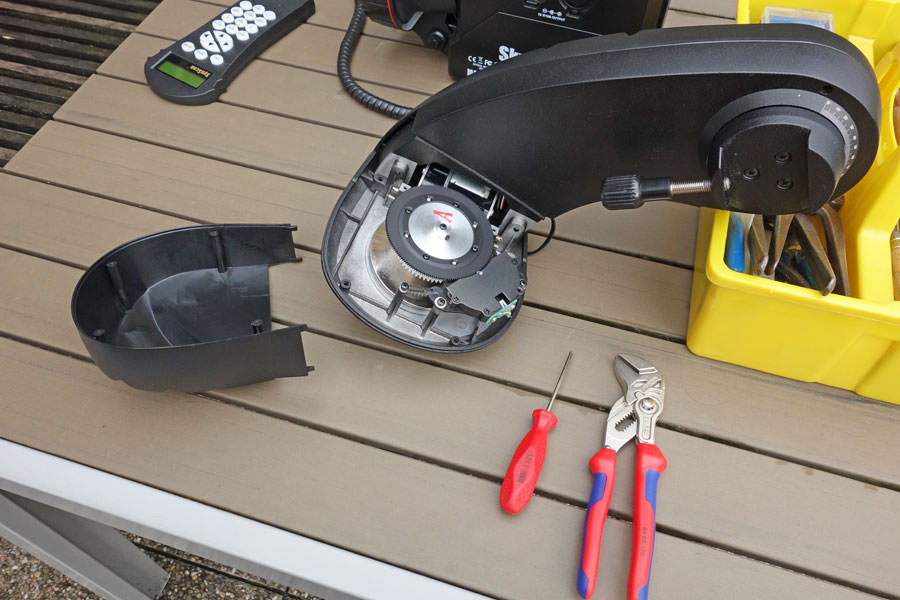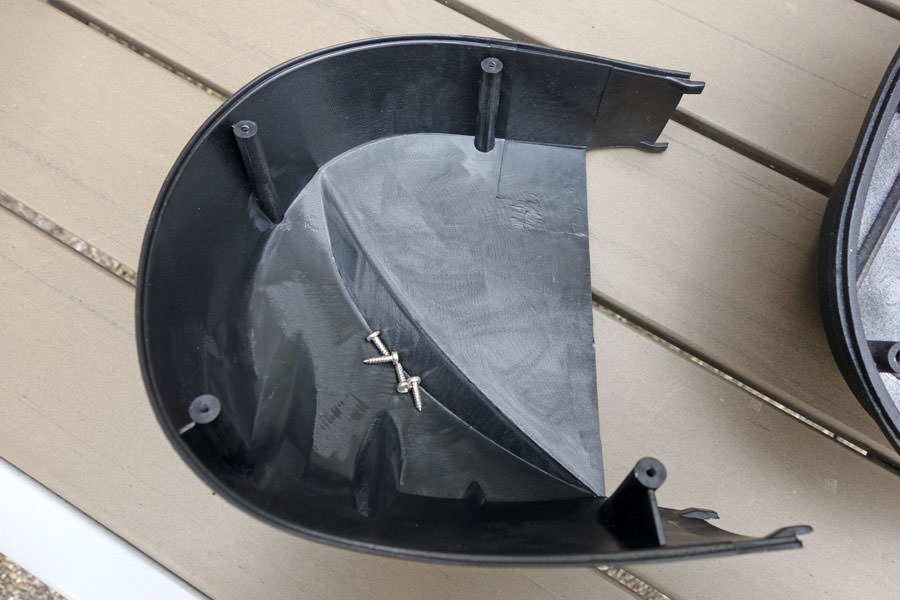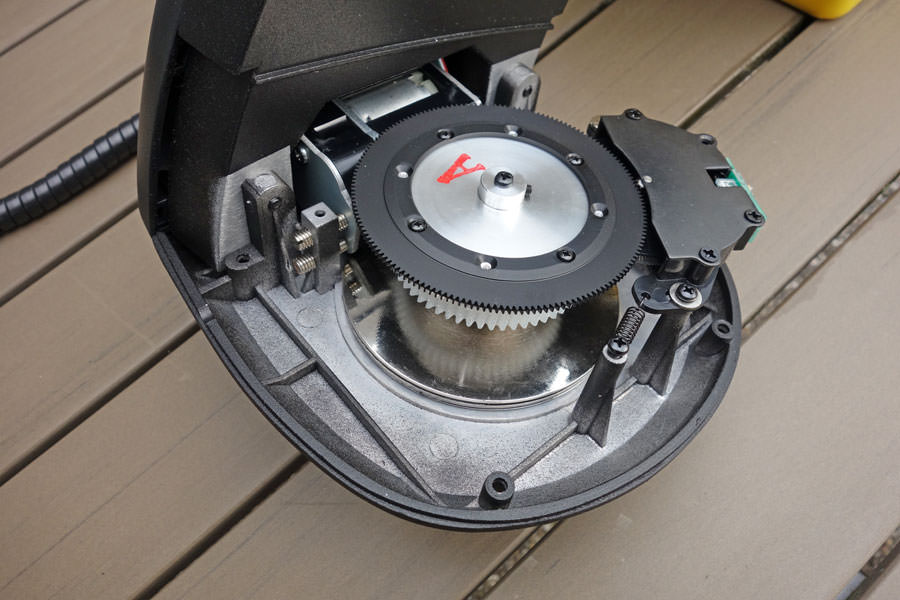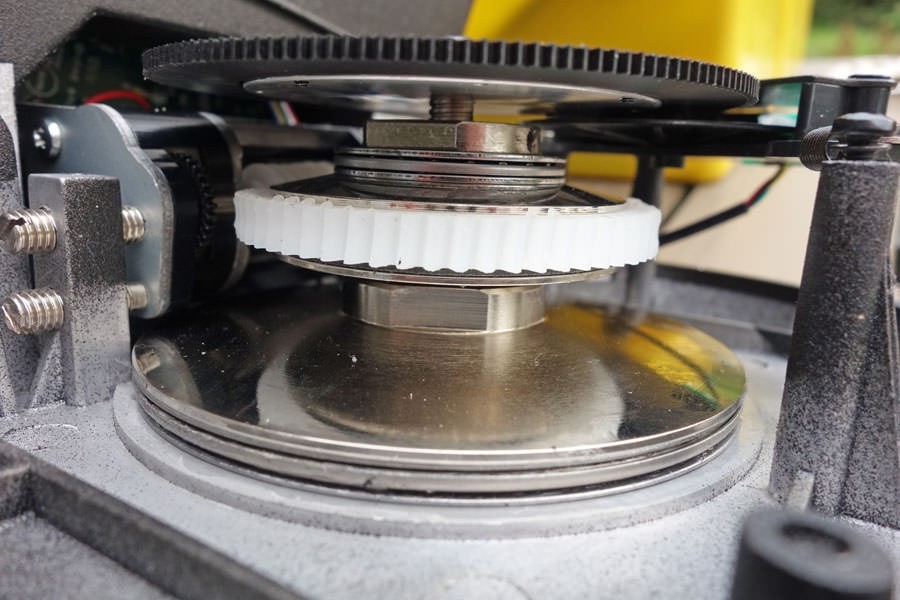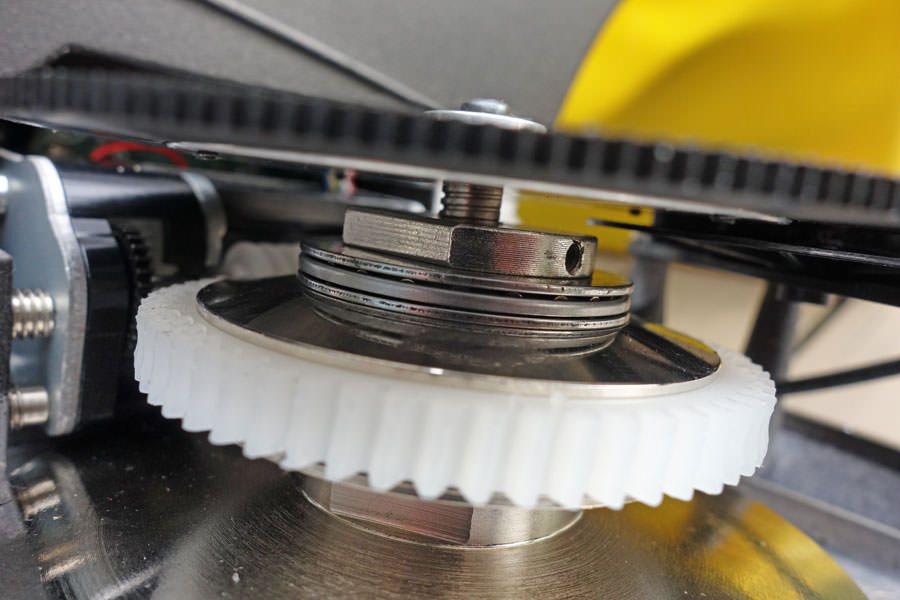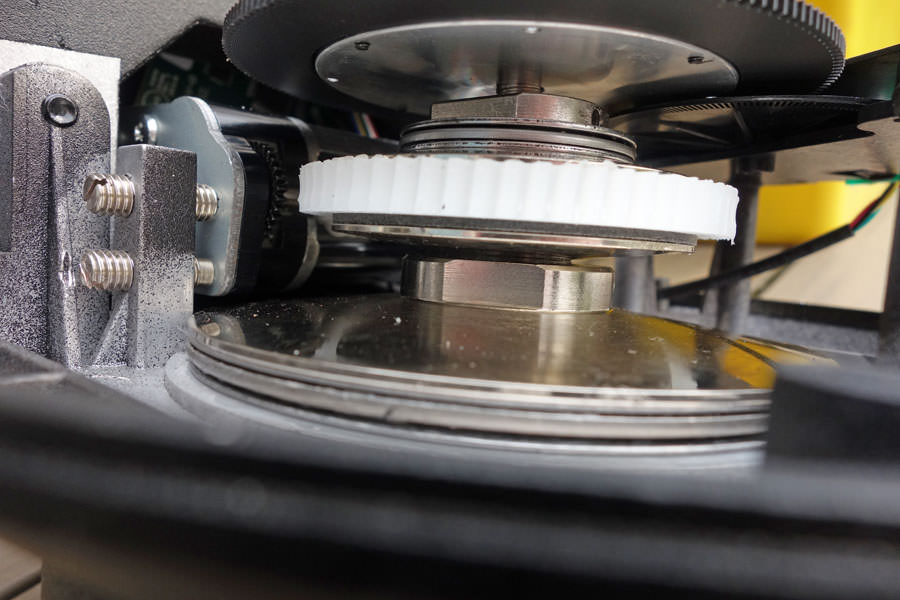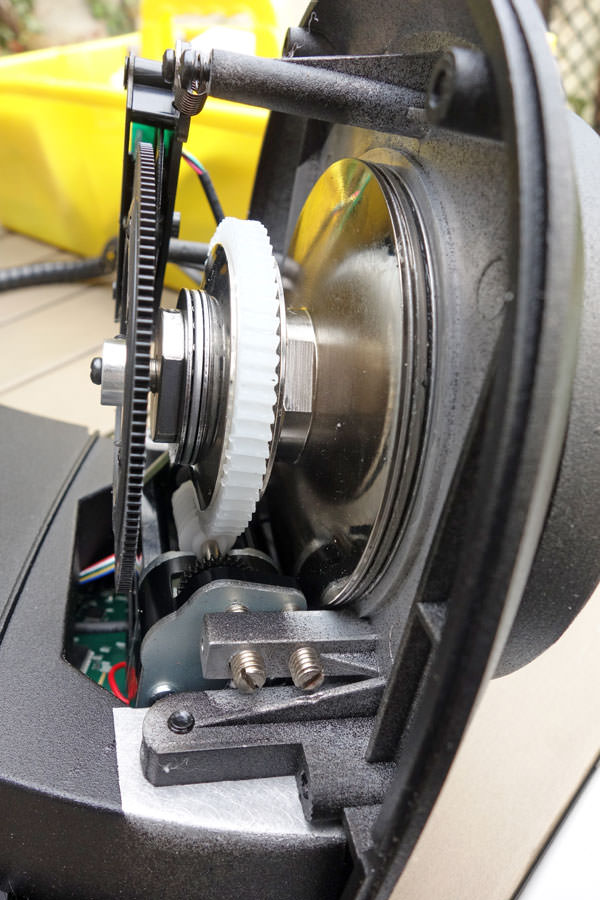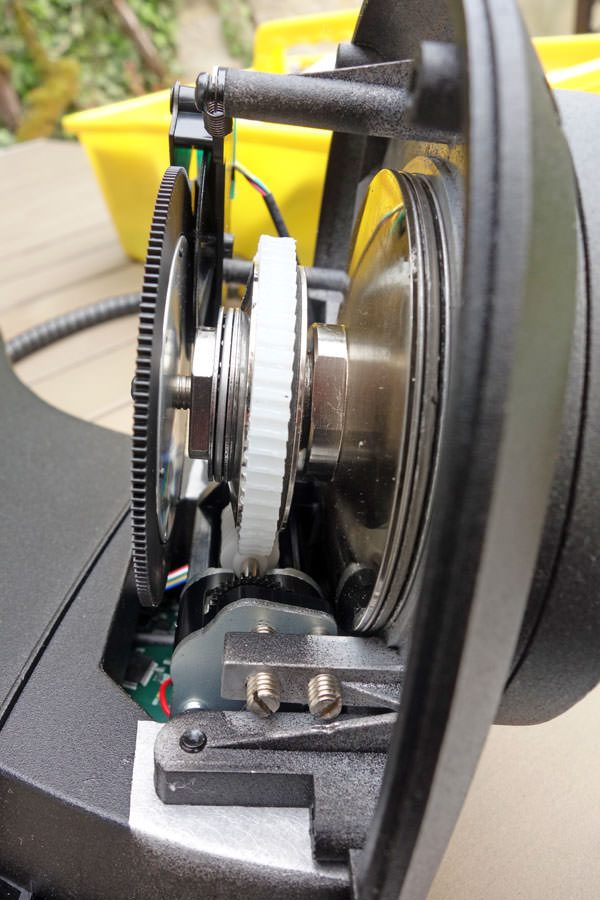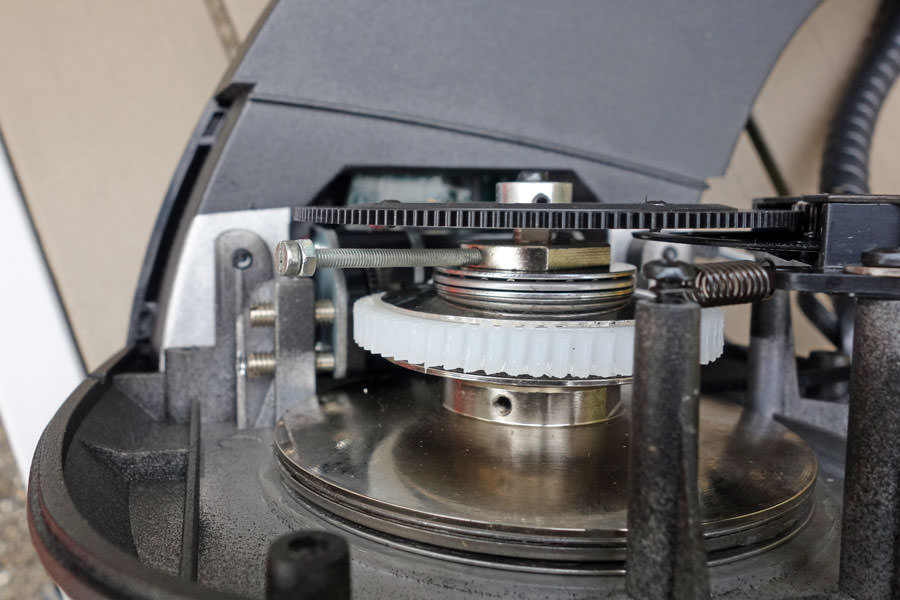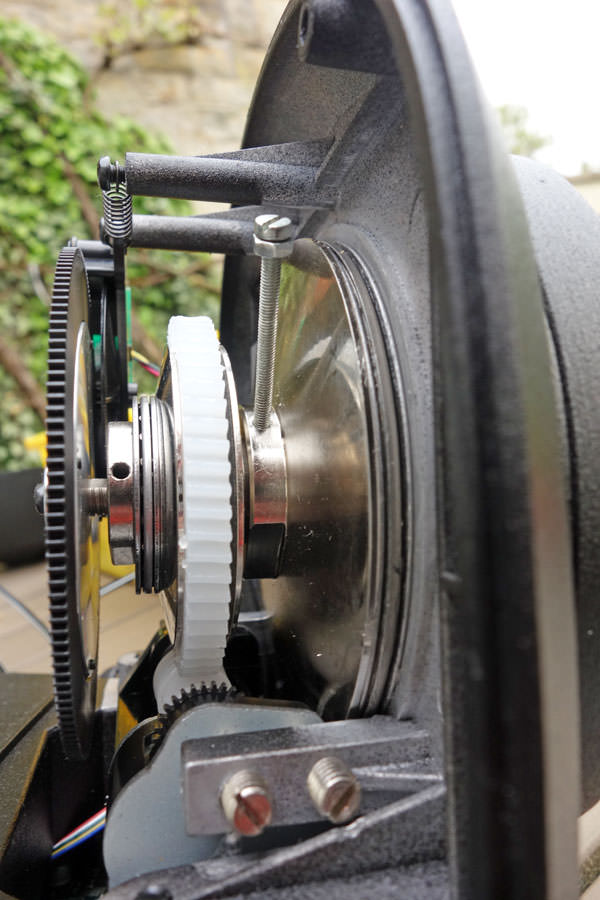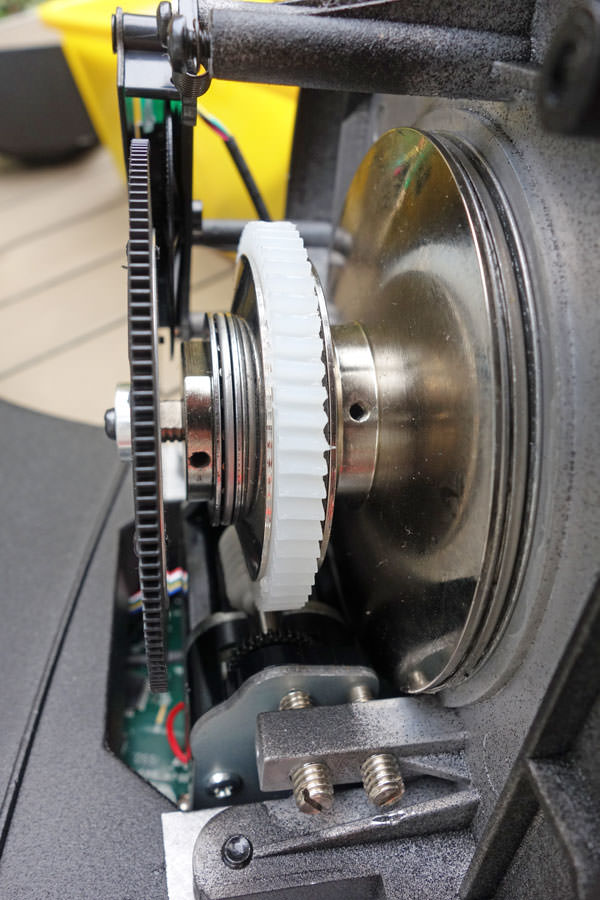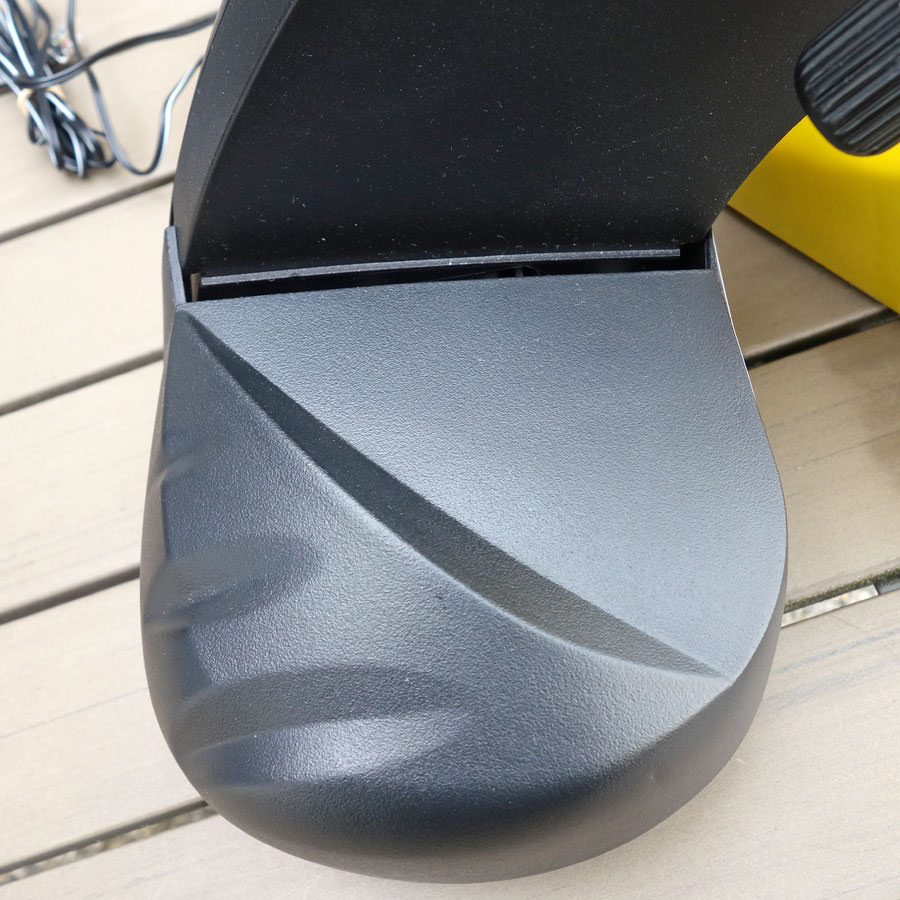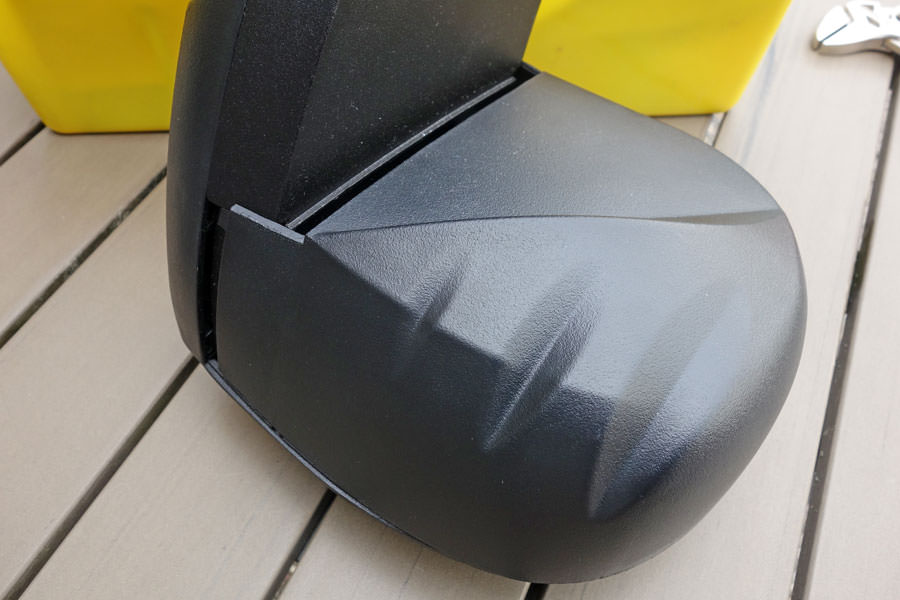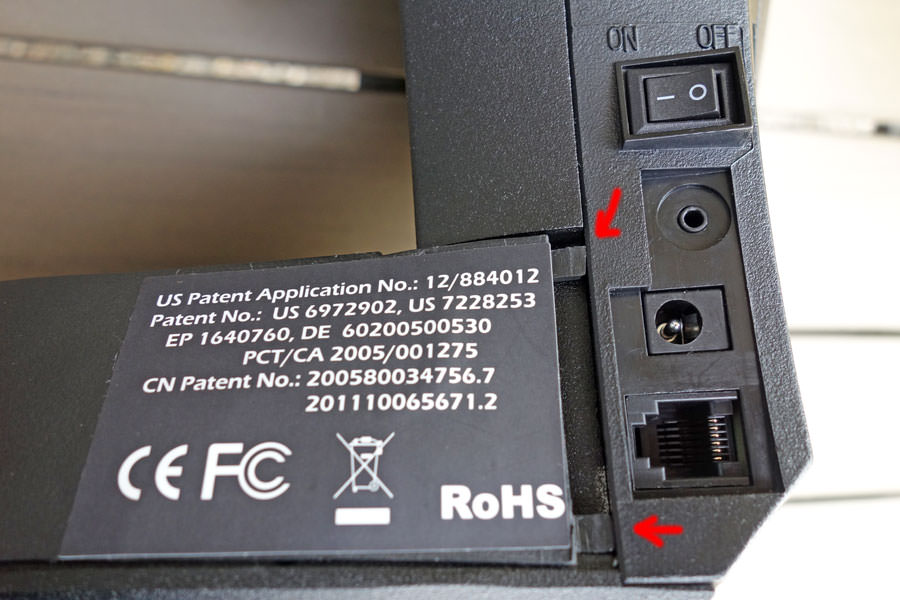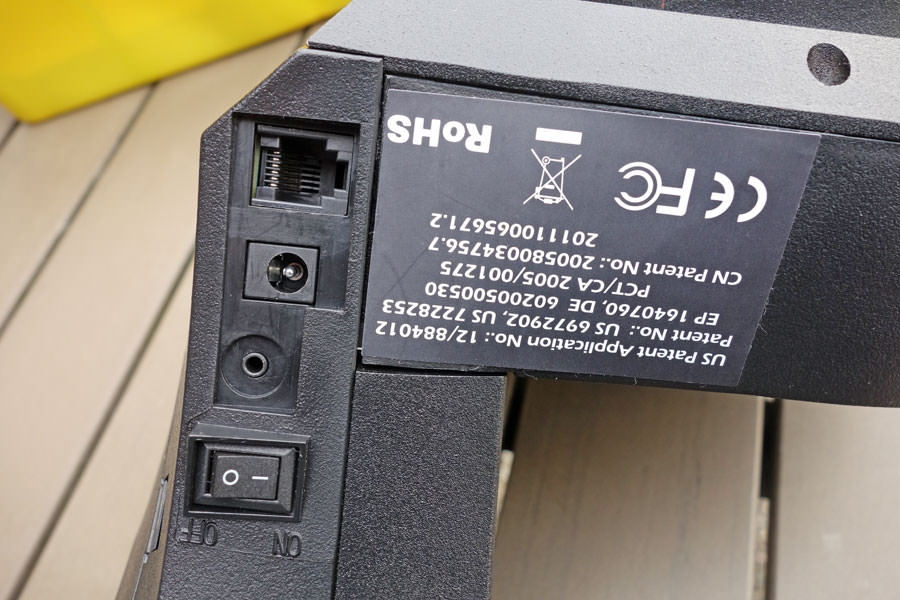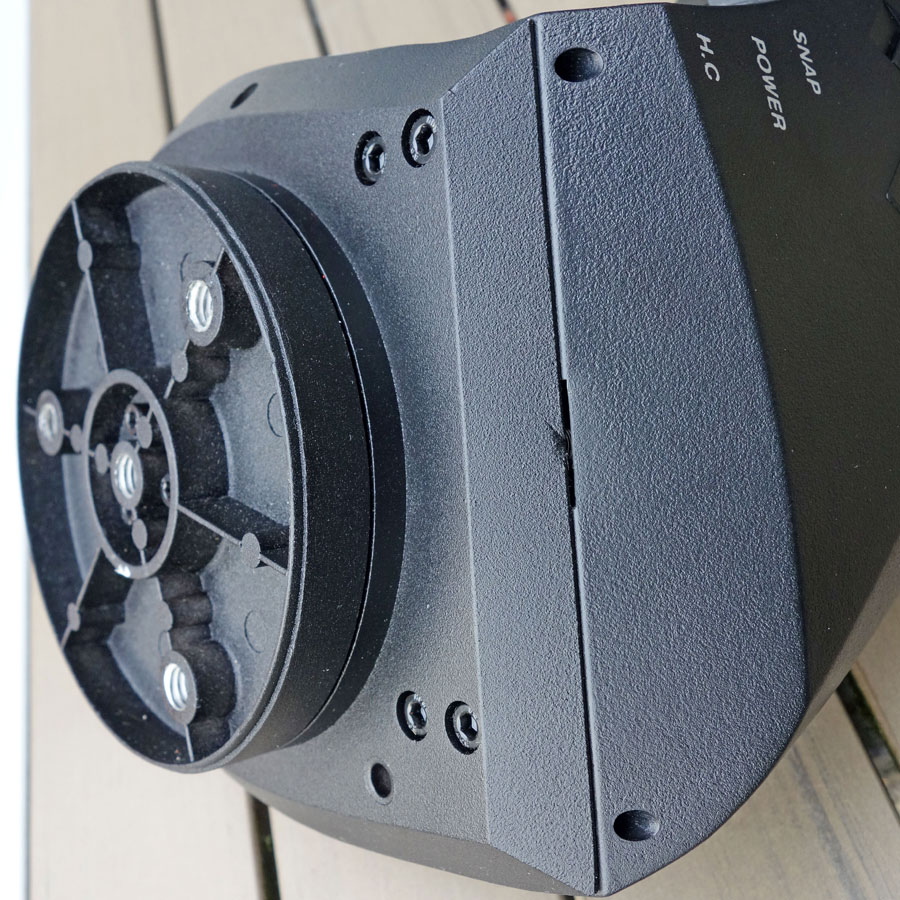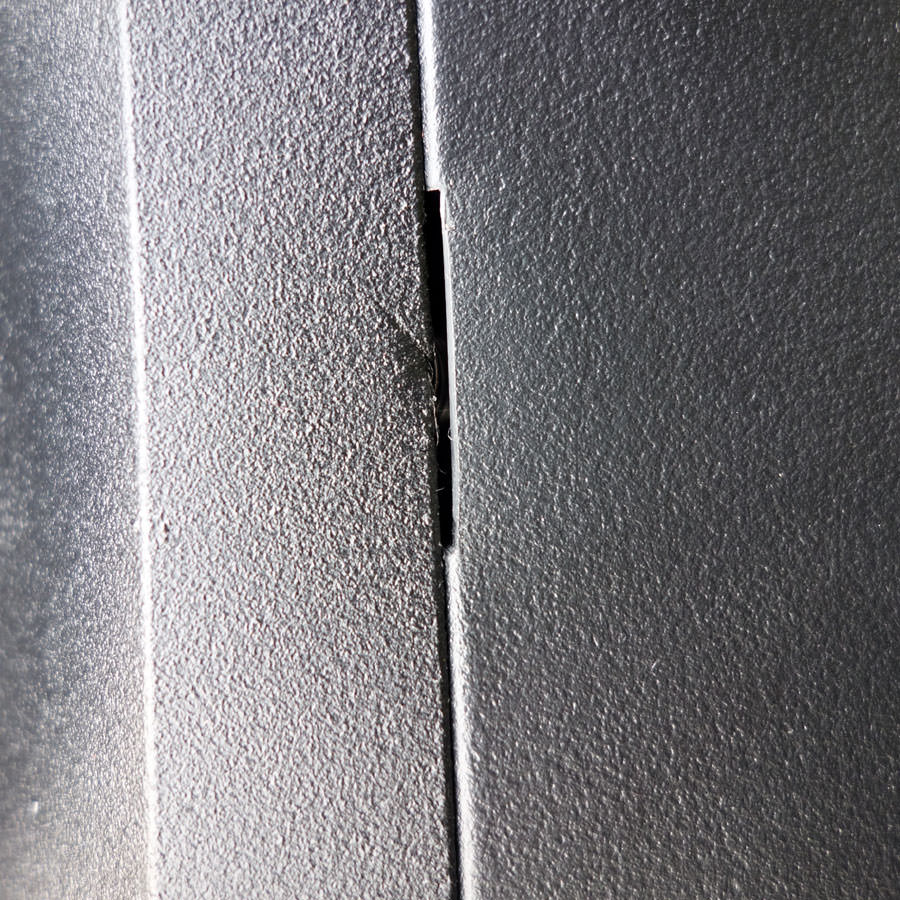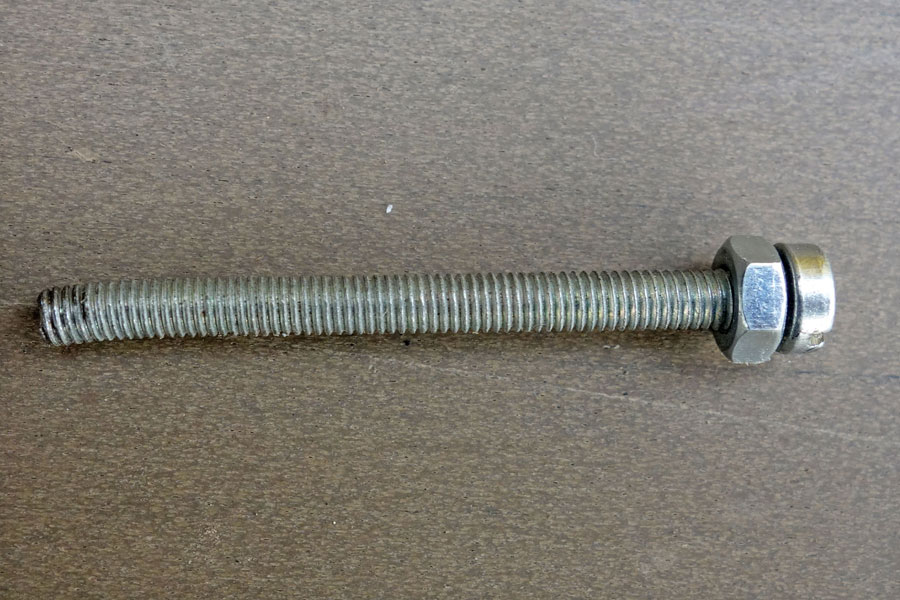Sky-Watcher Star Discovery AZ GoTo Mount - Adaptation to Heavier Loads
Introduction | My Attempt... | Photos | Preliminary Conclusions | Links
Archive
On this page, I describe how I tried to adapt my Sky-Watcher Star Discovery AZ GoTo mount so that it is able to carry heavier loads than the 5 kg that are listed by the manufacturer.
See here my experiences that I made so far with "overloading the mount with a 6" Newton tube."
| Note: I sold my Sky-Watcher Star Discovery AZ GoTo telescope mount at the end of November 2024. I therefore can no longer report any further experiences with this tube here. |
See also:
- Sky-Watcher Star Discovery AZ GoTo Mount Information Archive
- Sky-Watcher Star Discovery AZ GoTo Mount - SkyWire Information Archive
- Sky-Watcher Star Discovery AZ GoTo Mount - SynScan WLAN Information Archive
- Celestron StarSense AutoAlign for Sky-Watcher Information Archive
- Sky-Watcher Star Discovery AZ GoTo Mount - First Experiences Archive
- Sky-Watcher Star Discovery AZ GoTo Mount - General Experiences and Thoughts Archive
- Sky-Watcher Star Discovery AZ GoTo Mount - Named and Alignment Stars Archive
- Sky-Watcher Star Discovery AZ GoTo Mount - Control Options Archive
- Sky-Watcher Star Discovery AZ GoTo Mount - SynScan WLAN - First Experiences Archive
- Sky-Watcher Star Discovery AZ GoTo Mount - SynScan WLAN - Further Experiences Archive
- Celestron StarSense AutoAlign for Sky-Watcher - First Experiences Archive
- Celestron StarSense AutoAlign for Sky-Watcher - Further Experiences Archive
Introduction
According to the manufacturer, the Sky-Watcher Star Discovery AZ GoTo Mount can carry a load of up to 5 kg. In the meantime, a variant of this mount is being sold by Orion (Orion Mount StarSeeker IV SynScan GoTo), which costs 100 EUR more and is reported to be able to carry a load of up to 6 kg. When I asked my astronomy dealer about this mount, he advised me that both mounts are identical. Thus, the technical data with respect to the load that can be carries seem to be somewhat arbitrary - as I also found in other cases...
I had bought a 6" Newton tube (Sky-Watcher Explorer 150PDS), and all dealers listed its weight as 5 kg. This was the reason why I bought exactly this tube, since all other tubes, except for carbon tubes, were listed as being heavier. Shortly after having bought the tube, I went to the Sky-Watcher Website, and there I found a weight of 6 kg for the tube (BKP 150 DS). I was really embarrassed by this, since in this case I might have bought any other tube as well. When I measured the tube's weight myself, I found a weight of 5.5 kg, just the mean of the two weights that I had found... Having made these experiences, I am unsure, which technical data I can trust in, and in which I cannot trust... A mount that would be able to carry 6 kg would, of course, have been ideal in my case, but it looks as if the price difference between the Sky-Watcher and the Orion versions of the mount is based on reasons that I do not know...
Now, the question was, whether my GoTo mount would tolerate 1-2 kg more weight than listed or not... My dealer answered this question with a fairly definitive "yes" (there is no "fairly definitive", I know...) - at least if you adapt the mount a little to heavier loads. This requires that you increase the friction somewhat, so that the motors do not coast, but also do not have too much friction so that they drain the battery. When I tested my 6" Newton tube on the GoTo mount for the first time, the horizontal motor sometimes coasted, but not so during the second test. By the way, the dealer himself even uses an 8" Celestron C8 tube (5.7 kg) on this mount, but this is more or less in the same weight category as my Newton tube. He describes how to adapt the mount to heavier loads on the following Web page (in German):
- Reparatur und Einstellen Sky-Watcher Star Discovery AZ GoTo Montierung (Teleskop-Spezialisten): www.teleskop-spezialisten.de/shop/Astro-Blog-Erfahrungsberichte-Testaufnahmen/Infos-Tricks-Tipps/Reparatur-und-einstellen-SkyWatcher-Star-Discovery-AZ-GoTo-Montierung::2350.html
My Attempt...
Because I had forgotten to take the GoTo control with me when I visited my astronomy dealer (yes, my age shows...), I decided to make an attempt at adjusting the control myself to heavier loads. For this, I had received a couple of tips from the dealer and additionally had his description with photos on a Web page at my disposal. The page briefly describes how the mount can be adapted to heavier loads (in German):
- Reparatur und Einstellen Sky-Watcher Star Discovery AZ GoTo Montierung (Teleskop-Spezialisten): www.teleskop-spezialisten.de/shop/Astro-Blog-Erfahrungsberichte-Testaufnahmen/Infos-Tricks-Tipps/Reparatur-und-einstellen-SkyWatcher-Star-Discovery-AZ-GoTo-Montierung::2350.html
So I opened the mount case, figured out how to tighten the nuts without the use of a wrench by employing a long screw that I screwed into a screw hole in the nuts (see the photos below), and then tried to turn the nut with this "lever." It showed, however, that the upper nut was already very tight and I only bent the screw without really turning something. Maybe I moved the upper nut a little bit, but I am not sure anymore... I did not even attempts this at the lower nut, because I was unsure about what was to be done.
So I put the cover on again, tested my 6 " Newton tube on the mount - the horizontal motor did not coast this time - and I will observe whether everything works fine or whether there are coasting issues. In the latter case, I will probably send the control unit to the dealer for adjustment, because he has so much more experience than me...
The whole affair turned out like the famous "Hornberg shootout," that is, without any decisive result, but at least I found taking a look at the innards of the control very interesting. I took a lot of photos during this procedure and present them in the following section - maybe some other owners of the GoTo mount are interested in this.
Photos
Below, I present photos of my attempt at adapting my Sky-Watcher Star Discovery AZ GoTo mount for heavier loads (larger versions appear in a new window/tab if you click the photos).
Further photos and information about this topic (text in German):
- Reparatur und Einstellen SkyWatcher Star Discovery AZ GoTo Montierung (Teleskop-Spezialisten): www.teleskop-spezialisten.de/shop/Astro-Blog-Erfahrungsberichte-Testaufnahmen/Infos-Tricks-Tipps/Reparatur-und-einstellen-SkyWatcher-Star-Discovery-AZ-GoTo-Montierung::2350.html
Preliminary Conclusions
Since my "project" ended like the famous "Hornberg shootout," that is, without any decisive result, I even cannot offer a preliminary conclusion here. I've learned a lot, but not quite as much as what I need to know. For example, I would like to know, what functions the two nuts exactly serve (one for horizontal, one for vertical turns?).
I will therefore continue to observe whether my 6 " Newton tube will work properly on the GoTo-mount or whether there will by coasting issues one day. In the latter case, I will probably not touch the control again. Instead, I will send it to the dealer for adjustment, because he has much more experience than me...
See here my experiences that I made so far with "overloading the mount with my 6" Newtonian tube."
| Note: I sold my Sky-Watcher Star Discovery AZ GoTo telescope mount at the end of November 2024. I therefore can no longer report any further experiences with this tube here. |
Links
- Sky-Watcher Company Website, USA: www.skywatchertelescope.net, ca.skywatcher.com (older
site?)
(the Star Discovery AZ GoTo Mount is not found on the company Website) - Pages from German distributors for the Sky-Watcher Star Discovery AZ GoTo
Telescope Mount:
- Teleskop-Spezialisten (here I bought the telescope): www.teleskop-spezialisten.de/shop/Montierungen/Azimutale-Montierung-ALT/AZ/Skywatcher-Star-Discovery-AZ-GoTo-Teleskop-Montierung-inkl-Stahlstativ-bis-5kg::1863.html (in German)
- Astroshop: www.astroshop.de/azimutal-mit-goto/skywatcher-montierung-az-synscan-goto-star-discovery/p,50254#tab_bar_1_select (in German) - www.astroshop.eu/alt-azimuth-with-goto/skywatcher-az-synscan-goto-star-discovery-mount/p,50254 (in English)
- Adjustment (Teleskop-Spezialisten) www.teleskop-spezialisten.de/shop/Astro-Blog-Testimonials//::2350.html?language=en (photos only)
- See also my page offering Astronomy Links.
| 28.11.2024 |
